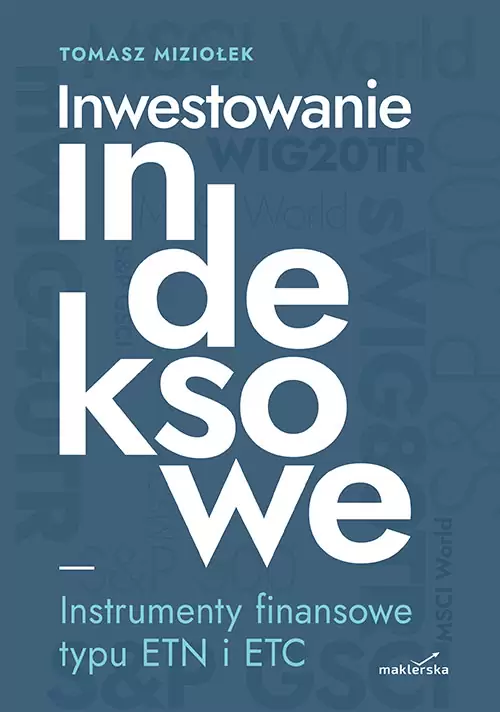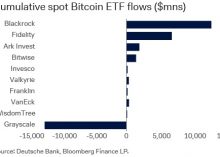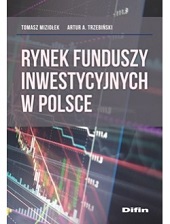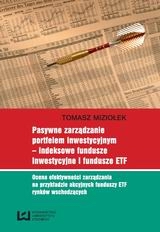Kolejny artykuł Francisa Grovesa, tym razem dotyczący czynników, które należy brać pod uwagę wybierając fundusze ETF.
Rating That Exchange Traded Fund
One sign of ETFs coming of age in 2011 is the arrival of a number of a number of new or enhanced services to help in the process of assessing ETFs before investing. These range from Standard & Poor’s rating based on analysis of the constituents of the indices being tracked (equities only) through Morningstar’s extending it’s reach from mutual funds into ETFs to IndexUniverse’s soon-to-be-revealed ETF Analytics service.
For the private investor, the bad news is that these services seem to be aimed at financial advisers and they are not going to be freely available any time soon. The good news is that there is a wealth of free information on the Internet to help investors to form an opinion about potential ETF investments. The problem is that it’s not all collected together in one place and there’s a real danger of information overload. So the smart investor needs to decide what information they really must have before making an investment decision about any individual ETF.
I was thinking about ETF vital statistics back in March and my personal shortlist emerged as follows:
-
The performance of the index tracked relative to other indices covering the same sector, country or region; say for three years
-
The expense ratio
-
The assets under management (AuM) for the ETF
-
The average bid/ask spread
-
The average daily volume traded
-
The size of discounts or premiums to net asset values (NAV) on average
I also felt that it would be useful to have some idea of the liquidity of an ETF’s constituents (underlying liquidity) and to have on record how the ETFs performance against these measures was changing. For example, in January, I was looking at Powershares Global Agriculture NASDAQ OMX ( PSGA:LN ) and I was a concerned that with a low AuM figure of $28m, it might be in danger of being closed down. Five months later PSGA still only has $36m* under management and during that time I’ve purchased some of its shares. I’m still slightly concerned that that figure is on the low side so I’d like to know if it changes and, if it does, if it goes up or down.
Since March, the European debate about risks arising from so-called synthetic (or swap-based) ETFs has blown up and alongside it the parallel controversy about the counterparty risks to securities lending by providers of fully replicated ETFs. The solution to these problems seems to be more transparency and accountability on these topics on the part of the providers, so data on collateral in swap-based ETFs and on securities lending in ETFs based on in-kind replication are two more boxes to be added to my checklist.
In an ideal world investors would have all this information in one place, a kind of EurotaxGlass’s for ETFs instead of used cars. However, for the time being we are going to have to make do with doing our own research. What follows is the approach I take at present.
For comparing the performance of ETFs tracking the same index or different indices but the same basic market, I use Bloomberg.com. One can also use Bloomberg for AuM figures and data on daily volumes traded.
Sourcing really good information on ETF expenses is trickier as one can never be sure that total expense ratio figures are truly total. In particular, some exchange traded funds and exchange traded commodities may not have included fees paid to the index publisher or fees charged for index replication and the latter, in particular, can be sizeable. In the case of UCITS-compliant ETFs, the best policy is to check the fund’s simplified prospectus.
To get a picture of the historic trend in discounts or premiums to NAV isn’t easy but Bloomberg will give you the current picture. An alternative substitute check may be to use providers own sites, which should provide charts or tables giving some idea of how well the ETF tracks its index**, and some information providers also give access to this information free of charge.
Historic bid/ask spreads seem the most difficult measure of all to locate. Vanguard gives historic data on this for its own ETFs and ETFexplorer’s premium service provides a single percentage spread figure for each ETF listing provided that exchange provides market maker data. For US-domiciled ETFs, XTF’s premium service also provides an average bid/ask ratio. Deutsche Boerse publishes details of its Xetra Liquidity Measure (XLM) in its monthly ‘ETFs & ETCs Facts and Figures’*** but remember that spread data tends to be specific to the exchange as well as the security.
Regarding details of collateral for swap-based ETFs, some providers such as iShares and db x-trackers are already providing details of the collateral basket and the likelihood seems to be that – with eagle-eyed regulators showing interest – other providers will follow suit. Unfortunately, although a full prospectus will provide some information about securities lending of an ETF’s assets, it’s difficult for investors to weigh up the risks and rewards this could bring.
This list of checks isn’t exhaustive but, given that a private investor is likely to have a limited amount of time for research, these would be my priorities.
* ETFexplorer, the Swiss based European ETF database provides a handy net new money figure for each ETF.
** In this area db x-trackers has clear charts whereas, unusually, iShares’ are not quite so good. Lyxor uses comparison tables for each fund, which are easy to read. Db x-trackers also provides monthly tables of tracking error for its ETF range. Morningstar’s European country sites also provide this information in chart form free of charge and IndexUniverse will have it once their analytics are ready (but for a price, I understand).
*** The XLM looks at the cost of a (round trip) purchase and immediate re-sale of euro 25,000’s worth of an individual company’s or an ETF’s shares.
Francis Groves is a researcher and writer on investment topics, based near London, England. His most recent book, 'Exchange Traded Funds, A Concise Guide To ETFs’ was recently published by UK Publisher, Harriman House. This guide covers the essentials of investing with ETFs for financial advisers and serious private investors. Visit http://www.harriman-house.com/exchangetradedfunds to find out more.
Artykuł został przygotowany specjalnie dla serwisu www.etf.com.pl.






Wpis jeszcze nie ma komentarzy.